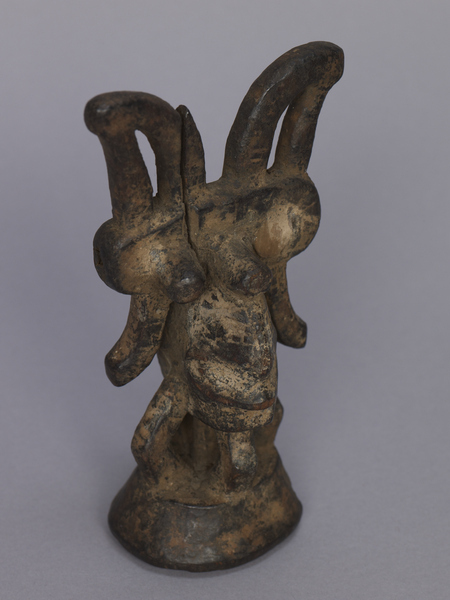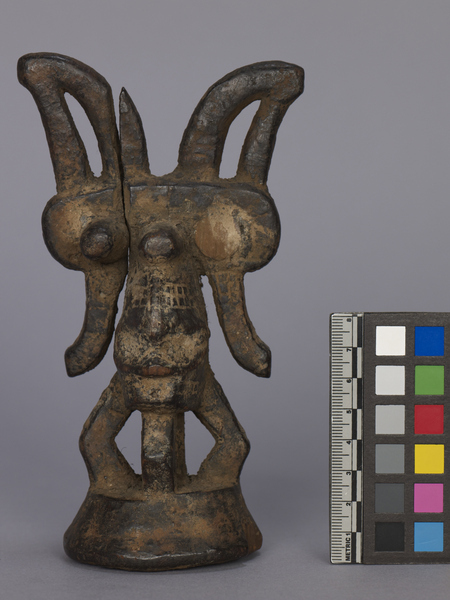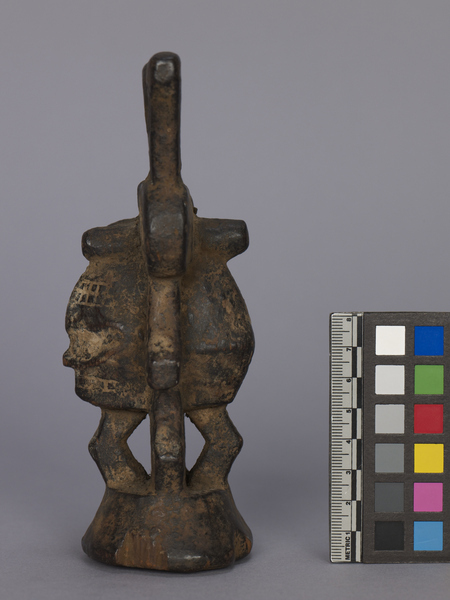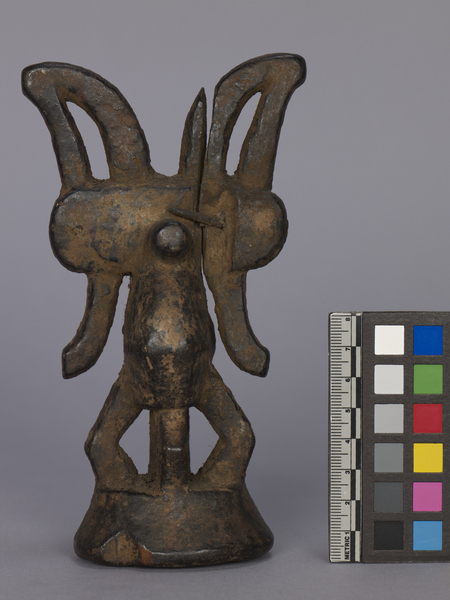Figure Item Number: 3055/12 from the MOA: University of British Columbia




Description
Wooden ikenga figure. The figure stands on a circular base, from which rises the central rectangular post that supports the head of the figure, surrounded on four sides by bent v-shaped, rectangular posts. The head is very large and flat with an angular face. The face consists of a square chin with a wide, open mouth. Above the mouth the face slopes up and back and is decorated with incised square shapes. The top of the face is adorned with two carved circular protrusions, one in the centre of the face and one on the right side of the face with a space for the missing third on the left side of the face. There is also a circular protrusion on the top of the head in the back. The two side protrusions are part of the two large, curved horns (right side is broken) that extend outwards from the top of the face. The upper sections of the horns are wide and carved to be hollow in the interiors, while the lower sections are narrower and solid. The upper sections of the horns attach to a rounded, flat piece that sits on top of the central bulge of the face.
History Of Use
Ikenga (literally "strength of movement") is a horned spirit and one of the most powerful symbols for the Igbo people. Smaller figures were owned by individual men; larger ones were made for family and village shrines. Although taking on different forms, the figures always have a pair of ram’s horns, representing the animal’s strength and fortitude, characteristics like power, achievement and upward mobility, valued by men who regularly invoke them for success. Ikenga rarely stand alone; they appear on altars alongside other objects dedicated to chi or ndimmo (ancestors). This acknowledges achievements of individuals, as well as relationships with family and the creator. To affirm these relationships, the ensembles are given joint offerings. When ikenga do stand alone, sometimes in the sleeping quarters of their owners, the offerings they are given only acknowledge success in personal undertakings, such as hunting or trading expeditions. Annual feasts dedicated to ikenga provide further opportunity for the evaluation of personal achievement.
Item History
- Made in Nigeria
- Owned by Alan R. Sawyer before 2002
- Owned by Erika H. Sawyer before April 16, 2014
- Received from Erika H. Sawyer (Seller) and Museum of Anthropology Acquisitions Budget (Funding source) on April 16, 2014
What
Who
- Culture
- Igbo
- Previous Owner
- Alan R. Sawyer and Erika H. Sawyer
- Received from
- Erika H. Sawyer (Seller) and Museum of Anthropology Acquisitions Budget (Funding source)
Where
- Holding Institution
- MOA: University of British Columbia
- Made in
- Nigeria
When
- Ownership Date
- before 2002 and before April 16, 2014
- Acquisition Date
- on April 16, 2014
Other
- Item Classes
- carvings & sculpture
- Condition
- fair
- Accession Number
- 3055/0012